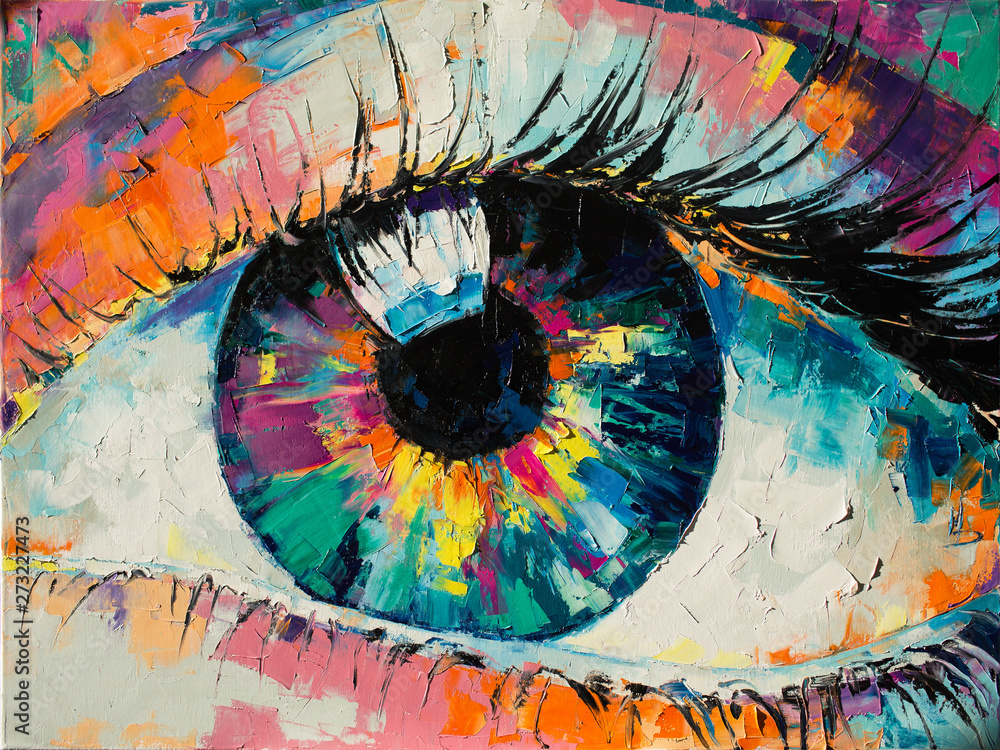Exploring Everything About Oil Paintings: A Guide to Comprehending Their Charm and Value
Oil paints have astounded target markets for centuries, providing a peek right into the imaginative mastery of various periods. Their abundant background is linked with innovative techniques and extensive emotional expression. Recognizing the products and techniques behind these art work can boost gratitude. Additionally, the market for oil paintings provides opportunities for enthusiasts and capitalists alike. As one discovers this fascinating globe, the inquiry develops: what makes an oil painting absolutely useful?
The History of Oil Paint: A Journey With Time
Although oil painting has origins that go back to old times, it genuinely prospered during the Renaissance, when musicians found its convenience and abundant shade capacity. Early instances can be traced to the 7th century, with methods developing especially across societies. The tool became popular in Northern Europe in the 15th century, specifically with the jobs of musicians like Jan van Eyck, who originated its use for in-depth realistic look and vivid hues. This duration noted a departure from tempera paints, permitting greater deepness and appearance. As oil paint spread, it influenced countless musicians, resulting in work of arts by renowned figures such as Leonardo da Vinci and Rembrandt. The tool's legacy proceeds, forming the art world well into contemporary times.
Recognizing Oil Paints: Materials and Techniques
As artists explore the world of oil paints, they experience a varied array of materials and methods that specify this tool. The key components of oil paint include pigments, which offer shade, and drying out oils, such as linseed, that bind the pigments and help with application. Different ingredients can modify the paint's texture and drying time, improving convenience. Techniques like glazing, where transparent layers are developed, and impasto, which involves applying thick paint, permit different aesthetic impacts. In addition, the usage of brushes, palette knives, and even fingers can develop special appearances and coatings. Comprehending these strategies and products allows artists to fully express their creativity and achieve the wanted influence in their art work.
The Function of Color in Oil Paintings
Color plays a critical function in oil paintings, affecting both aesthetic charm and emotional vibration. Understanding shade concept essentials, consisting of the relationships in between hues, can improve an artist's capacity to share mood and ambience. In addition, mastering color blending methods enables greater deepness and richness in a paint's palette.

Color Theory Essential
Understanding shade concept is necessary for musicians collaborating with oil paints, as it forms the foundation for producing harmonious and visually interesting make-ups. Shade theory encompasses the research study of how colors interact, the shade wheel, and the connections in between main, secondary, and tertiary shades. Artists make use of corresponding shades to improve contrasts and create prime focus, while similar colors advertise unity and cohesiveness within a piece. In addition, the concepts of cool and cozy colors affect the assumption of depth and room in a painting. Grasping these principles allows musicians to manipulate color efficiently, guiding the visitor's eye and connecting their designated message. Mastery of shade theory inevitably enhances an artist's capability to convey feelings and ideas via their job.
Psychological Impact of Color
The emotional impact of color in oil paints plays an essential function in just how viewers view and link with art work. Colors evoke particular sensations and state of minds, influencing the audience's emotion. Warm colors like oranges and reds can develop a feeling of warmth and energy, while amazing tones such as blues and eco-friendlies commonly stimulate peace or self-contemplation. Artists purposefully pick shade schemes to boost narrative components, assisting the target market's emotional journey. The saturation and contrast of colors further enhance these impacts, attracting attention and creating emphasis. Eventually, the interaction of shades in oil paints not just enhances their aesthetic allure yet also offers as an effective tool for psychological expression, improving the visitor's experience and analysis.
Shade Mixing Techniques
While numerous aspects of oil paint add to the total composition, mastering shade mixing strategies is essential for accomplishing preferred impacts and depth. Color mixing can be approached with various techniques, including the additive and subtractive processes. Additive mixing involves incorporating shades of light, while subtractive mixing relies upon pigments, where colors blend to create new shades. Artists often utilize a limited scheme to produce harmonious jobs, understanding the partnerships between key, additional, and tertiary colors. Methods such as glazing and scumbling further boost depth and luminosity. By skillfully mixing shades, a musician can stimulate emotions, develop centerpieces, and attain a feeling of realism, ultimately boosting the paint's psychological and visual influence.
Famous Oil Painters and Their Iconic Functions

Renowned for their mastery of color and strategy, oil painters have produced several of the most popular art work in background. Prominent musicians like Vincent van Gogh astounded target markets with his stirring brushwork in "Starry Evening," while Claude Monet's "Perception, Sunup" laid the foundation for Impressionism. Leonardo da Vinci's "Mona Lisa" continues to be a long-lasting icon of imaginative genius, showcasing his ability in catching human expression. Rembrandt's "The Night Watch" highlights his innovative use of light and darkness. Various other remarkable numbers include Pablo Picasso, who changed contemporary art with his vibrant experimentation in works like "Les Demoiselles d'Avignon," and Georgia O'Keeffe, whose vivid depictions of landscapes and flowers helped define American innovation. Each musician's unique design contributed substantially to the oil paint landscape.
Just how to Review the High Quality of an Oil Painting
Evaluating the top quality of an oil paint involves a mindful evaluation of craftsmanship strategies, in addition to an analysis of shade and composition. Observing brushwork, layering, and the application of paint can disclose the artist's ability level. In addition, the interaction of colors and the general arrangement of components contribute substantially to the paint's aesthetic worth.
Evaluating Craftsmanship Methods
A careful assessment of workmanship techniques is crucial for identifying the quality of an oil paint. Critics ought to first check out the application of paint; thick, textured brushstrokes might suggest an experienced hand, while extremely uniform applications can suggest an absence of depth. oil paintings for sale. The layering method is additionally important; the presence of lusters and differed thickness can improve luminosity and complexity. Furthermore, the quality of the materials made use of, such as the canvas and pigments, plays a considerable role in durability and read more total visual. Attention to information in aspects like sides and shifts in between colors mirrors the artist's dedication to their craft. Eventually, these strategies add to the paint's emotional influence and market price, functioning as signs of the musician's skill and intent
Assessing Color and Composition
While reviewing the high quality of an oil paint, one should focus on the interaction of shade and composition, as these components are fundamental to the artwork's total effect. Shade selections can evoke feelings and establish state of mind; for that reason, the musician's palette ought to be checked out for harmony and contrast. A healthy make-up guides the visitor's eye and creates a feeling of unity. Musicians frequently use strategies like the regulation of thirds or leading lines to boost aesthetic passion. In addition, the usage of light and darkness can include deepness, improving the three-dimensionality of the paint. Ultimately, a successful oil painting marries color and structure, engaging the customer and inviting a much deeper admiration of the musician's vision and strategy.
Caring for and Preserving Oil Paintings
Correct treatment and preservation of oil paintings is essential for maintaining their honesty and durability. To safeguard these art work, it is crucial to display them away from straight sunlight, which can cause fading and staining. Preserving a stable setting with controlled temperature and moisture more help in avoiding damages. Cleaning ought to be done gently making use of a soft, completely dry towel, preventing any kind of rough chemicals that could hurt the paint or varnish. Regular inspections for indications of deterioration, such as cracking or flaking, are advisable. When saving or delivering oil paintings, proper extra padding and framework are required to avoid physical injury. Eventually, persistent treatment adds to the aesthetic allure and value of oil paints with time.
The Marketplace for Oil Paintings: Accumulating and Spending
Recognizing the market dynamics for oil paintings is essential for investors and collection agencies alike. The worth of these artworks is influenced by different factors, consisting of the artist's credibility, historic value, and current fads. Collection agencies often look for pieces that resonate directly while taking into consideration potential gratitude in worth. Public auctions and galleries serve as primary locations for trading, with rates rising and fall based upon need and rarity. Purchasing oil paints calls for research right into the marketplace, in addition to an understanding of credibility and provenance. Additionally, emerging musicians might provide possibilities for significant returns, while established names can regulate high rates. Overall, a tactical strategy to collecting can generate both visual satisfaction and economic rewards.

Frequently Asked Questions
What Are the Ecological Impacts of Oil Painting Products?
The environmental impacts of oil painting products include the launch of volatile natural substances (VOCs), harmful waste generation, and resource extraction for pigments. These aspects add to pollution and ecological degradation, raising issues among environmentally mindful artists and consumers.
How Do Different Canvases Affect Oil Painting Outcomes?
Various canvases affect oil paint results considerably. Absorbency, surface, and appearance high quality can modify paint application, drying out times, and color vibrancy. Artists frequently choose details canvases to achieve wanted effects and enhance their artistic expression.
Can Oil Paintings Be Restored if Damaged?
If damaged, Oil paints can without a doubt be brought back. Professional conservators make use of various techniques to repair tears, tidy surfaces, and address discoloration, ensuring that the art work preserves its original charm and worth for future generations.
What Are the Indications of an Original Oil Paint?
The indications of an original oil paint include noticeable brush strokes, structure variations, and an irregular canvas weave (oil paintings for sale). Furthermore, authenticity might be confirmed via provenance, signatures, and the presence of a varnish layer special to oil mediums
Just How Has Innovation Influenced Modern Oil Paint Techniques?
Modern technology has actually considerably influenced modern-day oil painting methods by introducing electronic devices for planning, boosted materials for appearance and long life, and on the internet platforms for sharing and marketing art, thus increasing artists' innovative possibilities and audience get to. Oil paint has roots that date back to old times, it truly thrived throughout the Renaissance, when artists found its convenience and rich color possibility. The emotional effect of shade in oil paints plays a critical role in exactly how visitors connect and regard with artwork. While many aspects of oil paint add to the overall composition, understanding color blending methods is important for achieving wanted impacts and deepness. Examining the quality of an oil paint includes a mindful assessment of craftsmanship strategies, as well as an analysis of color and structure. While examining the top quality of an oil paint, one have to concentrate on the interaction of shade and make-up, as these elements are fundamental to the artwork's overall impact.
Comments on “Vibrant Nature-Themed Oil Paintings for Sale”